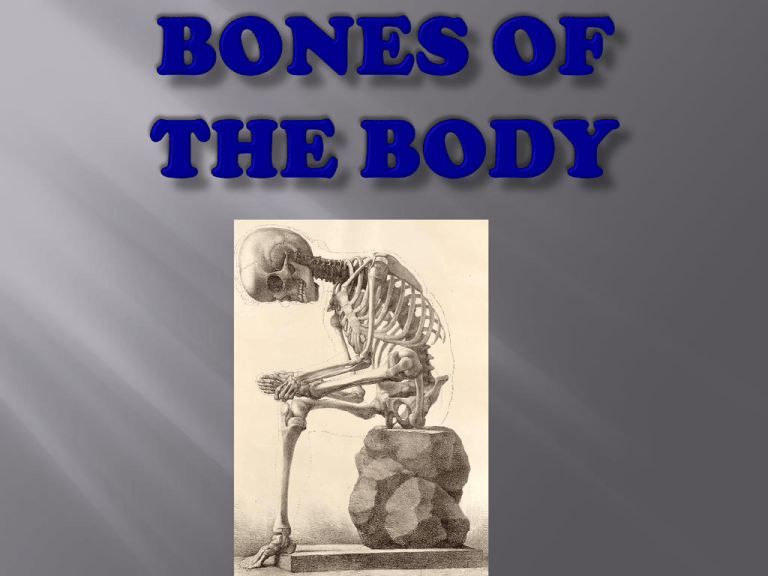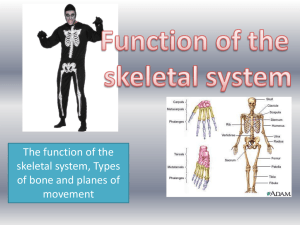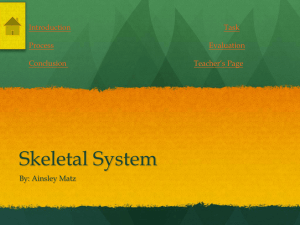Bones pp
advertisement

Fun Facts About Bones That You Should Know Babies have more bones than adults We have around 350 bones that we are born with. As we grow up, the number reduces to 206. Well, they don’t go anywhere, except that sometime around the age between 12 and 14, some of our smaller bones, fuse into larger, big and stronger bones! Human thigh bones are stronger than concrete, the Femur bone as it’s called – the biggest and strongest bone in our body. It is easily capable of lifting or supporting 30 times its own volume and weight Bones consist of 50% water and 50% solid matter. They are hard, strong and very much alive. They have tons of living cells which help them grow and repair Themselves. Humans and Giraffes have the same number of bones in their necks. They both have 8, giraffe neck vertebrae Are just much, much longer There are 26 bones, 33 joint, and More than 100 muscles, ligaments And tendons in each foot. Long Bones Short Bones Flat Bones Irregular Bones Sesamoid Bones Long bones are some of the longest bones in the body, such as the Femur, Humerus and Tibia but are also some of the smallest including the Metacarpals, Metatarsals and Phalanges. The classification of a long bone includes having a body which is longer than it is wide, with growth plates at either end. Short bones are defined as being approximately as wide as they are long and have a primary function of providing support and stability with little movement. Examples of short bones are the Carpals and Tarsal's the wrist and foot bones. Flat bones are as they sound, strong, flat plates of bone with the main function of providing protection to the bodies vital organs. The classic example of a flat bone is the Scapula (shoulder blade). The Sternum (breast bone), Cranium (skull), hip bone, Pelvis and Ribs are also classified as flat bones. Irregular Bones These are bones in the body which do not fall into any other category, due to their nonuniform shape. Good examples of these are the Vertebrae, Sacrum and Mandible (lower jaw) Sesamoid bones are usually short or irregular bones, imbedded in a tendon. The most obvious example of this is the Patella (knee cap) which sits within the Patella or Quadriceps tendon. Sesamoid bones are usually present in a tendon where it passes over a joint which serves to protect the tendon.. *Draw the skeleton to the best of your ability. *Label the bones. 1. How many bones does the Adult body have? 2. The Cranium is an example of which type of bone? 3. How may bones are in each foot? 4. The Patella is an example of which type of bone? 5. What is the largest and strongest bone in the body? 6. The Femur is an example of which type of bone? 7. Give one example of an irregular bone 8. Bones consist of _____% water and _______% solid matter. 9. The wrist and foot are examples of which type of bone? 10.What are the 5 types of bones?








